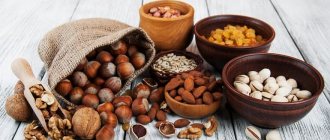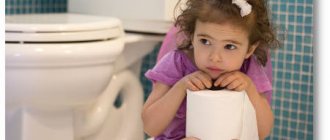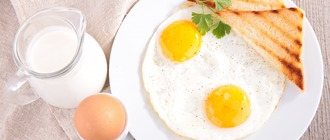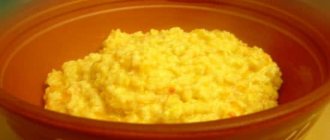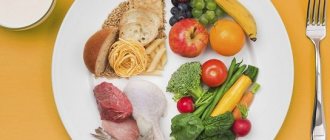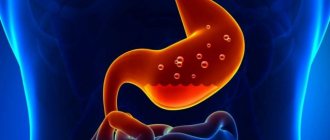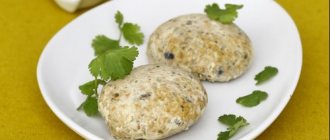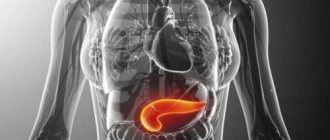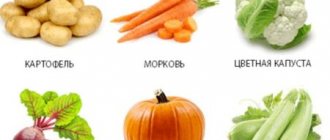Health is a state of the human body in which it is possible to live fully and rejoice, there is strength and opportunity to achieve success and goals. At the slightest malfunction of the immune system or disruption of the activity of a certain organ, a person faces a number of difficulties and difficulties. It is especially difficult to live when the illness is long-lasting and turns into a chronic disease. A new stage of life begins, you have to deny yourself a lot, constantly monitor your diet.
Improper functioning of the pancreas leads to a number of diseases and syndromes that are extremely difficult to cope with and live fully. Frequent visits to the doctor, diagnostics, and courses of treatment at an early stage give positive results. In the future, you will no longer be able to do without a certain diet and monitoring the state of the body.
With pancreatitis, the process of release of enzymes by the pancreas into the duodenum is disrupted and is not produced sufficiently, leading to the consequences of internal intoxication of the organ. Toxins that enter the blood excessively as a result affect the functioning of other organs: the heart, liver, kidneys, lungs under the gun of poisons, and, what is more dangerous, the brain. Such processes are harmful; leaving the disease unattended means suffering from constant abdominal pain, nausea, dizziness, bloating, and bowel problems.
Allowed or prohibited?
Very often, people notice that their pancreas hurts after eating sweets. The pain is dull and aching, it is concentrated in the abdomen and left hypochondrium, radiating to the heart, back, and the area between the shoulder blades. Sometimes the pain syndrome is accompanied by nausea, vomiting, and diarrhea. Similar symptoms occur after eating cakes and pastries, chocolate and sweets, and sweet fruits in large quantities. If you experience severe pain after eating confectionery, you must first relieve the pain, and then switch to fasting and drinking plenty of fluids.
Pancreatitis is a serious disease of the pancreas. Those who have been diagnosed with this disease know firsthand what periods of exacerbation are. The diagnosis does not allow concessions and requires a significant revision of your usual diet.
Revision in this case usually means excluding most of your favorite dishes, but when attacks of pain and a quiet life are on the scale, the choice is obvious, right?
But what about sweets? Is it possible to make small concessions? After reading the article, you will find out the answers to the questions posed. You will be able to decide for yourself whether your health is worth the moments of weakness, and those with a sweet tooth will be able to determine what alternative can be found to confectionery products.
Everything is not as fatal as it might seem at first glance, just learn to modify your eating habits, and your health will thank you. For more information about whether you can eat sweets with pancreatitis, read below in the articles I have collected on this topic.
The influence of sweets in pancreatitis
Sugar-containing foods put pressure on the gland. Additional formation of insulin requires increased work of the pancreas. The disease requires the use of sweeteners. Mousses and puddings are included in the diet after symptoms are relieved.
People with a sweet tooth find it difficult to give up their favorite foods that can cause nervous excitement. Light desserts are preferable in terms of diet and speed of preparation. But the demands of gastroenterologists prohibiting the addition of glucose are puzzling. The question arises: what sweets can be consumed with pancreatitis?
Preference is given to products that were prepared at home. Store-bought ones should not contain dyes, chemical additives, or flavorings that have a detrimental effect on the diseased organ. Treats should include ingredients containing fructose. Glucose is prohibited for consumption.
Compliance with dietary nutrition will protect the patient from exacerbation of the disease. Spices, fat, alcohol are not allowed for cooking. Stale and expired products are contraindicated for patients.
Useful recommendations for choosing sweets
When including sweets in your diet, you should adhere to the following recommendations:
- It is better to include homemade sweets in the menu;
- granulated sugar should be replaced with fructose (it is sold in supermarkets and looks like regular sugar);
- when consuming industrially produced sweets, you should avoid products with flavors, dyes, and preservatives;
- It is important to eat fresh foods.
Today, grocery stores are opening departments with safe sweets that do not contain sugar and do not provoke the production of insulin by the pancreas. Of course, their taste will not be as rich and bright as that of usual sugar-containing treats. But their use will not provoke exacerbations and will not undermine fragile health.
Now you know why you can’t eat sweets if you have pancreatitis. The diet that people suffering from pancreatitis have to adhere to is difficult for those with a sweet tooth. During the period of remission, you can treat yourself to permitted sweets, but it is important to remember the norm and not overeat.
What desserts are recommended for pancreatitis?
Poor nutrition affects the pancreas, stimulating the liver and gallbladder. Congestion of the organ provokes pain. An ideal treat for pancreatitis is marshmallows, consisting of protein, sugar, pectin, gelatin and agar.
Marshmallow content (100 g):
- Carbohydrates (80 g);
- Proteins (0.9 g);
- Fats (0.2 g);
- Energy value (330 Kcal);
- Thiamine, riboflavin, nicotinic acid;
- Potassium;
- Iron;
- Iodine.
The daily norm is 45 grams. The addition is berry, nut, fruit fillings. It contains a minimum of calories, which is indispensable when following a diet. Enriched with vitamins and microelements. Reduces cholesterol and removes toxins.
Iodine and iron help normalize hemoglobin levels. Begin to introduce no more than ½ part into the diet, a maximum amount of 2-3 pieces, washed down with tea or water per day. It is necessary to exclude from consumption with the addition of artificial additives and flavor enhancers. The acute form of the disease prohibits the use of marshmallows and its substitutes.
How important is it to eat sweets?
All treats contain sugar, which is contraindicated by doctors. Everyone's favorite jam should be used for pancreatitis, following dosed use. The daily allowed norm is 2-3 teaspoons. Fruits and berries should be of sweet varieties without the addition of citrus fruits.
With pancreatitis, as with gastritis and cholecystitis, you should not eat fatty and carbohydrate foods, which often include desserts. Therefore, you need to choose natural products. It is allowed to periodically include soft cookies, marshmallows, fruit mousses and homemade soufflé in the diet. Jelly for pancreatitis, like desserts made from boiled sugar, is also consumed. From time to time you are allowed to treat yourself to nuts; they can be candied to improve their taste.
Meringue for pancreatitis is also included in the category of relatively safe products. You are also allowed to eat savory pastries and homemade sweets. People with pancreatic inflammation should give preference to fruits and berries. It is better to avoid exotic species and choose fruits that are not sweet.
You can safely consume apple and raspberry mousse, as well as other types of fruit desserts and drinks:
- jelly;
- candied fruit;
- marmalade;
- jam;
- paste;
- jam;
- compote.
Doctors recommend making your own jelly for pancreatitis. A healthy dessert made from natural berry or fruit juice will not harm the pancreas and will help it recover faster. Another approved product for pancreatitis is drying. Moreover, they can be eaten even during an exacerbation, but only if they are prepared according to a dietary recipe.
Is it possible to drink sweet tea if you have inflammation of the pancreas? You shouldn't give up this drink completely. However, it must be prepared in a certain way. Tea should not be sweet, not strong and without milk. It is better to choose loose quality varieties without additives. It is advisable to drink the drink no more than 2 times a day after meals, freshly brewed. Regarding honey, it is allowed to eat it during the period of remission and during the chronic form of the disease, but in limited quantities.
For pancreatitis, the natural product will be useful because it:
- strengthens the immune system;
- eliminates constipation;
- does not irritate the pancreas and does not force it to work harder;
- has an antiseptic effect.
But if you abuse honey, allergies will appear, and pancreatic function will worsen, which will increase the risk of developing diabetes. How much nectar is allowed to be eaten during pancreatitis without harm to health? With the above disease, you can eat a small amount of sweet foods, the main ones are:
- inconvenient baked goods, these can be cookies, meringues, dry breads, etc.;
- homemade desserts with low sugar content;
- sweets made from boiled sugar;
- fruit marmalade, marshmallows and marshmallows;
- berry mousses and jellies;
- jam and jam in small quantities;
- honey, dried fruits;
- unsweetened fruit
All these products should be consumed in small doses and with extreme caution, constantly monitoring your well-being. Experts believe that it is best if patients suffering from pancreatitis use no more than 50 g of sweets daily.
Chronic pancreatitis and sugar
Granulated sugar, which activates the pancreas, is not recommended for consumption even during a period of stable remission. In addition to pure sugar, it is found in many industrial products, even bread, sauces, and yoghurts. With chronic pancreatitis, the patient has to carefully monitor his diet, study food labels before purchasing, and try to prepare food himself from safe ingredients.
Find out how pancreatic fibrosis manifests itself.
Read: what stool can look like with gastritis.
We advise you to find out how long food is digested in the stomach.
Which sweets should you choose?
During long-term remission (at least a month), you can introduce some sweets into the menu. But it is advisable to prepare them yourself, using sweeteners instead of granulated sugar. If it is impossible to prepare dessert yourself, you need to choose products that have a minimum sugar content:
- paste;
- marmalade;
- jelly;
- marshmallows;
- dried fruits;
- mousses from berries and fruits;
- preserves, jams (prepared without adding sugar);
- egg white soufflé, meringue.
Attention! Honey is not a safe alternative to sugar. It contains both fructose and glucose, often in approximately equal quantities. Therefore, its processing also requires the participation of the pancreas.
What is allowed in the acute form of the disease?
Glucose and the pancreas get along well in a healthy body. The sugar included in the composition forces the gland to produce insulin, and the load on the unhealthy organ increases. During an exacerbation of pancreatitis, it is necessary to reduce the load, dessert is completely excluded from the patient’s diet, even consuming a small amount of sugar is unacceptable.
The first days after the attack has stopped, therapeutic fasting is useful, which is accompanied by taking a large amount of liquid. Gradually, light protein products (poultry, veal, fish) are included in the menu. After a month, the strict diet can be softened. Jelly, puddings, and fruit mousses are added to the menu. Dishes are prepared with a sugar substitute. The inclusion of other sweet products is not permitted.
The pancreas produces a special secretion in the body. Once in the duodenum, the enzymes lipase and amylase help digest food. When the pancreas becomes inflamed (pancreatitis), gland cells are damaged, the production of enzymes is disrupted, and the inflammatory process gradually spreads to other organs of the digestive system and abdominal cavity.
The most common cause of problems is poor diet and alcohol. Under the influence of alcohol, the viscosity of pancreatic secretions increases, which can lead to stagnation. Diseases of the gallbladder, because the ducts of these organs are anatomically connected, if a stone clogs the gall duct, then bile will begin to flow into the pancreatic duct, disrupting its normal functioning. A special diet is recommended for patients with pancreatitis. Some products are prohibited.
If there are problems with the pancreas and gall bladder, then do not burden the digestive system, do not irritate the gland, do not interfere with its functioning normally. Do not start diseases, because the organs and systems of the body are interconnected, problems in one cannot but affect the work of the others associated with it.
Limit alcohol, smoking, do not overeat, follow the recommendations. What is possible and what is not allowed What is possible for problems with the pancreas, and what is strictly contraindicated. It is clear that during exacerbations it is better to give up sweets and follow the doctor’s recommendations. What to eat during the period of remission, how to pamper yourself?
Psychologically, it is easier for a person to know that he can afford to eat something tasty, albeit in small quantities. Cakes, pastries, and pancakes in their traditional form - rich in fat and easily digestible carbohydrates - are prohibited. But it’s quite possible to cook something lighter.
Treats based on jelly, yogurt, diet pancakes without butter (with a minimum of butter), sponge cake made with egg whites, soda and milk, not too sweet. It is better to eat only homemade baked goods, the contents of which you are confident in. You cannot guarantee that purchased products are free of harmful fats, even if the product states that it is a low-calorie diet cake.
But in general, it is better to limit bakery products and yeast products, because such food stimulates the pancreas and causes fermentation in the intestines. It is better to give preference to shortcrust pastry, biscuits, homemade rather than store-bought.
Cookies, light dietary, give preference to homemade ones; thanks to the Internet you can find a lot of recipes. You can also eat a piece of banana without harm as an alternative to sweets. If you have problems with the digestive system, moderation in diet is important.
Eat in small portions, fractionally. Even healthy food eaten in large quantities can cause digestive problems. Avoid sweets for tea, because modern “chocolate” sweets don’t contain anything - the composition is indicated on the packaging, but in too small a font, but you can make it out with a magnifying glass.
Instead of chocolate, take soufflé, fudge or marmalade. You can eat marshmallows. It is low in fat and contains gelatin, which has a beneficial effect on digestion. During non-exacerbation periods, you can eat this delicacy.
It is better to abstain from chocolate, because during its processing a lot of pancreatic juice is released, and this can cause problems with the pancreas. During periods of persistent remission, you can indulge in some chocolate, with a small percentage of cocoa.
The effect of sweets on the inflamed pancreas
Sweets for pancreatitis are on the list of prohibited foods for a reason. Sweets, and especially candies, have a negative effect on the inflamed pancreas.
This influence is justified by the following factors:
- The treat is filled with refined carbohydrates, which are digested with the help of insulin. The production of this hormone is often disrupted when the gland becomes inflamed. As a result, eating sweets can lead to the development of diabetes.
- Sugar causes increased pressure inside the intestines. This leads to disruption of the production of pancreatic juice, causing pain in the right hypochondrium.
- Sweets contain a lot of carbohydrates. If the functioning of the digestive organs is disrupted, the processing of such an amount of carbohydrates leads to increased gas formation in the intestines, flatulence, and increased tone of the intestinal walls. For this reason, the passage of digestive enzymes from the pancreas to the intestines is disrupted.
- Eating a significant amount of sweets causes the development of dysbiosis.
- Many types of sweets are filled with solid fats, which are poorly absorbed during inflammation of the pancreas.
- The vast majority of sweets are made using dyes, stabilizers, flavors and other harmful food additives.
- Some types of treats contain lactose and milk powder, the digestion of which requires the enzyme lactase. Pancreatitis is often accompanied by lactase deficiency, and therefore the consumption of delicious foods causes intestinal upset, which is accompanied by flatulence, bloating, colic, and stool disorders. Intestinal disorders impede the passage of pancreatic enzymes, which leads to exacerbation of inflammatory processes.
- Chocolate or icing used to cover the delicacy stimulates the production of gastric juice and pancreatic secretions, which is harmful for pancreatic diseases. In addition, chocolate glaze is now of low quality and contains many harmful fats and chemicals.
Sweets are very high-calorie foods, and for pancreatitis, the consumption of easily digestible low-calorie foods is indicated.
The benefit of sweets is that they replenish the body's energy reserves, have a calming, anti-stress effect, and improve mood.
Candies with fruits or nuts coated with natural dark chocolate can be considered healthy. Cocoa has antiseptic and anti-inflammatory properties. However, you should know that in case of inflammation of the pancreas, the list of fruits and nuts allowed for consumption is limited. This is especially true for fatty peanuts, which are prohibited both at the stage of acute inflammation and during persistent remission.
What sweets should people with pancreatitis avoid?
Pancreatitis is considered a dangerous pathology of the pancreas, during which you need to go on a strict diet and not eat foods with heavy fats. It turns out that the most delicious dishes will have to be excluded from the usual diet. Perhaps for some, living without sweets is the norm. But many patients cannot live without goodies and want to know what sweets are recommended to eat during pancreatitis.
At the acute stage of the disease, you need to remove all sweet products from the usual menu, for example, marmalade and halva are not allowed. If there is severe pain, then the patient only needs to starve and drink plenty of water.
If pancreatitis is not expressed in the form of painful attacks, then you can eat fish, poultry or beef dishes. After relieving intense pain during exacerbation of pancreatitis, it is allowed to eat jelly with a sweetener, berry mousses and puddings. Marshmallow for pancreatitis is also allowed. Other options for sweets for inflammation of the pancreas are not considered.
Pies with poppy seeds - an analgesic for acute pain
Poppy seeds have an antispasmodic effect and help cope with painful sensations at the acute stage. It also improves digestion, normalizes acidity with low production of hydrochloric acid. If you regularly consume poppy seeds, you will no longer need to take many medications prescribed for pancreatitis. The most convenient form is baked goods stuffed with poppy seeds.
The seeds contain a huge amount of vitamins B, C, E. Microelements. Poppy strengthens the immune system, stimulates tissue regeneration, and activates cell renewal. But the most valuable are papaverine, morphine, codeine. They have hypnotic, antispasmodic, and analgesic properties. Medicines are made based on poppy seeds for the treatment of hypertension, migraine, angina, renal and hepatic colic, and oncology.
Recipe for poppy seed infusion: pour 10 g of raw material into 200 ml of boiling water, leave to steep for 15 minutes, add a spoonful of honey. Drink before bed.
Prohibited Products
Dangerous treats for pancreatitis are caramel and lollipops. Chocolates with toffees are also prohibited. Ice cream, halva, condensed milk, cakes, waffles are prohibited. All of the listed products are not recommended for any manifestation of the disease. The food that is allowed is consumed according to the exact dosage. If you want to eat more, the portion should be increased gradually. For example, sugar per day can be no more than 50 mg.
If a patient becomes ill after eating marmalade or halva, they should be stopped immediately. Since this disease is dangerous at any stage, the diet should be selected only by a specialist, so that if discomfort or complications develop, contact him.
In the first 30 days after the onset of inflammation of the pancreas, you should not eat any sweet products at all. Sugar, marmalade and halva are also prohibited during this period. Delicious foods are excluded to reduce pressure on the pancreas so that it does not produce insulin. For pancreatitis, you can only use sweeteners that are added to drinks.
Dessert during remission
When the disease enters a long-term quiet phase, the list of permitted treats is gradually expanded. When selecting products, caution is strictly observed, certain requirements:
- Preference should be given to homemade sweet products. They contain fewer additives that are hazardous to health.
- Without being able to cook it yourself, when choosing in a store, read the label. The content of flavors, preservatives, and dyes will negatively affect the diseased organ.
- When preparing treats, include fructose in the composition. Even if the patient does not develop diabetes mellitus due to the disease, it is not worth provoking the organ to secrete insulin in order to process glucose.
- Don't forget about your diet. Your favorite delicacies should not contain fat, spices, or alcohol.
- Keep an eye on the expiration date. Expired, dried, yesterday's food is not suitable for a healthy body, and for a sick organ it is stressful.
- Know your limits. Don't overeat.
When the disease enters a “quiet” stage, some of the prohibited foods can be returned to the usual diet. Sweets are also allowed, but in limited quantities. Such food has its own requirements:
- It is advisable to prepare sweet cookies at home, since store-bought versions contain “bad” ingredients;
- sweets should contain fructose, due to the lack of insulin production for its digestion;
- The diet must be strictly followed. Large amounts of fat should not be allowed;
- sweets and other food should not be spoiled.
What are the allowed treats for pancreatitis?
People with pancreatitis need to replace their favorite sweet foods with foods with acceptable sugar content. What sweets are best?
List of dessert products allowed for patients as part of diet No. 5:
- marshmallows (preferably homemade based on applesauce or fruit puree, without chocolate glaze);
- marmalade, pastille, jam from permitted fruits;
- dry unsweetened cookies, incl. meringue;
- homemade gingerbreads and gingerbreads with fruit fillings;
- honey;
- fruit and berry mousses and jellies;
- cottage cheese and berry desserts (casseroles, baked cheesecakes, lazy dumplings) - based on low-fat cottage cheese;
- savory fruit pies;
- protein soufflé;
- homemade sweets made from boiled sugar, allowed with nuts or dried fruits;
- baked apples with various fillings;
- candied fruit.
Since fruits are used in large quantities to prepare sweet dishes, for pancreatitis it is better to give preference to local, seasonal, light-colored fruits: sweet varieties of apples, peaches, and apricots.
Watch the composition of treats. Jam, marmalade, and soufflé should be prepared using fructose. Try to protect yourself from consuming glucose. Bagels are considered the most dietary sweet. Rusks and bagels are allowed even during a severe hunger strike in the acute period. You need to be careful when buying bagels in a store; your favorite delicacy may contain fat. It is preferable to eat them soft, so a homemade recipe is the best way not to harm your health.
The list includes dishes that do not contain fat, but they should be introduced into the diet gradually. The maximum daily dose of treats is 50 grams. It is necessary to monitor the body’s reaction to each product separately; in case of exacerbation, the intake of goodies is stopped. Remember, before introducing new foods into your diet, consult your doctor.
If the pancreas is damaged, sweet dishes that contain sugar and fat are considered prohibited. List of the most dangerous to health:
- chocolates, caramel;
- Everyone’s favorite ice cream, halva, condensed milk in any form is prohibited;
- flour is prohibited;
- cake, cookies, gingerbread;
- grapes, dates, figs are on the list of prohibitions.
The above products cannot be eaten as an independent dish and cannot be included in a recipe for cooking. Chocolate, flour, and sweets can harm the organ during the chronic course of the disease; during the acute period, they are dangerous to health.
Sweets on the menu for acute pancreatitis
In the first days of the acute period and the exacerbation phase, the patient must follow a strict diet. All food is removed from the menu for 2-3 days, leaving only drink (water, herbal tea).
By day 3-4, you are allowed to eat a little viscous, well-mashed porridge and vegetable puree. The menu is expanding slowly, the first to be introduced are steamed vegetables, dietary meats and fish, and light soups. Eating sweets is strictly prohibited.
When acute symptoms subside, the patient is allowed to drink compotes from berries, fruits, jelly, and eat fruit puddings, but granulated sugar cannot be added to them. Dishes and drinks should have the natural sweetness of the ingredients used in their preparation.
We advise you to find out how buckwheat is useful for pancreatitis.
Read: can you drink coffee if you have diarrhea?
Fresh fruits, as an alternative to sweets, are also prohibited in acute pancreatitis. Many of them contain large amounts of organic acids and fiber, which can provoke dyspeptic disorders: bloating, intestinal cramps, heaviness. Bananas are an exception; fresh fruit puree can be gradually introduced into the menu when acute symptoms subside. When acute pain subsides and health improves, the patient is allowed to eat baked apples.
During the period of acute symptoms, it is allowed to eat bagels and biscuits. These products become the only products from the confectionery department that are allowed to the patient.
What sweets are the most dangerous?
Anything containing sugar will put stress on the damaged organ. Therefore, any sweets, even lollipops, syrups, and chocolate are prohibited for pancreatitis. But sweets that contain both sugar and fats will be much more dangerous. Various creams (in cakes, pastries), ice cream, condensed milk, halva, waffles - all these products deal a double blow to the pancreas. They need to be added to the “STOP list” for patients with pancreatitis forever.
Benefits and harms
Many sweets are prohibited for pancreatitis because they provoke the pancreas to produce large amounts of insulin, which is necessary for their processing in the body. Thus, the diseased organ experiences extra stress, and there is an additional risk of developing diabetes mellitus, which will aggravate the patient’s condition. In the acute form of the disease, glucose is excluded from the diet; if necessary, it is administered only intravenously if this is necessary to maintain the patient’s activity.
In the chronic stage, the list of acceptable foods containing sugar gradually expands. It should be borne in mind that sweets are also a source of excessive amounts of carbohydrates and fats, which are harmful to the recovering pancreas and can cause deterioration in heart function, disrupt metabolism and provoke digestive problems, especially with cholecystopancreatitis, as well as gallstones.
The potential harmful effects of sweets can be reduced by following these guidelines:
- Prepare them at home, without preservatives and fats, using sweeteners or fructose instead of sugar.
- Consume fresh, avoiding long-term storage.
- Give preference to non-solid desserts: mousses, jellies, puddings, soufflés.
- To provide the body with useful vitamins, introduce drinks such as jelly and compote into the diet.
- Even when consuming permitted sweet foods, carefully monitor your well-being and limit yourself to a small portion per day (up to 50 g).
Fruits as a source of energy
Pancreatitis is often accompanied by other diseases of the digestive tract. Due to improper functioning of organs, the absorption of useful components and substances is disrupted, vitality weakens, and immunity decreases. Fruits containing large amounts of fructose add energy, enhance the body's defense response, improve digestion, and saturate it with nutrients. They satisfy the need for sweets, thereby calming the nervous system and improving overall well-being. Some berries and fruits, for example, strawberries, bananas, stimulate the production of the hormone of joy and happiness. They lift your spirits and calm your nerves.
During the remission stage, you can eat all fruits and berries in moderation. In this case, the presence of other diseases of the digestive tract should be taken into account. If pancreatitis develops against the background of increased acidity, it is worth limiting the consumption of sour berries and fruits, especially citrus fruits, plums, cherries, kiwi, cherry plum, and currants. All the rest can be eaten, but they must be ripe.
Allowed fruits and berries:
- Watermelon;
- Melon;
- Peach;
- Apricot;
- Nectarine;
- Banana;
- Strawberry;
- Strawberries;
- Raspberries;
- Blackberry;
- Mulberry;
- Blueberry;
- Cherries;
- A pineapple;
- Avocado;
- Gooseberry;
- Papaya;
- Sweet grapes;
- Apple;
- Pear.
Fruits are used to make juices, compotes, salads, and added to pies, cottage cheese, oatmeal, and homemade confectionery.
Rules for introducing sweets into the diet
Basic recommendations for consuming sweets for chronic pancreatitis:
- Prepare treats at home using fresh, natural products – sweet berries, vegetables and fruits. In this case, it is better to replace sugar with fructose, honey or other sweeteners.
- Before purchasing, carefully study the composition of the products so that they do not contain flavorings, preservatives, flavor enhancers, or dyes.
- Buy only fresh goodies, without signs of damage, mold or plaque.
- Do not eat too sweet treats, delicacies with sour fruits, especially lemon, nuts (walnuts, pine nuts, pistachios are allowed in small quantities three months after the relief of acute pancreatitis), some dried fruits, and alcohol.
- Do not eat spiced treats.
- Avoid treats with fatty fillings.
- Avoid sweet baked goods.
- Do not eat sweets on an empty stomach and after six in the evening - since the treats contain a lot of carbohydrates, the body will not have time to burn calories before bed.
- Do not eat more than 30-60 grams of sweets in one day (depending on the degree of sweetness of the product) and do not eat goodies every day in a row.
Such rules will help prevent relapse of acute pancreatic inflammation.
